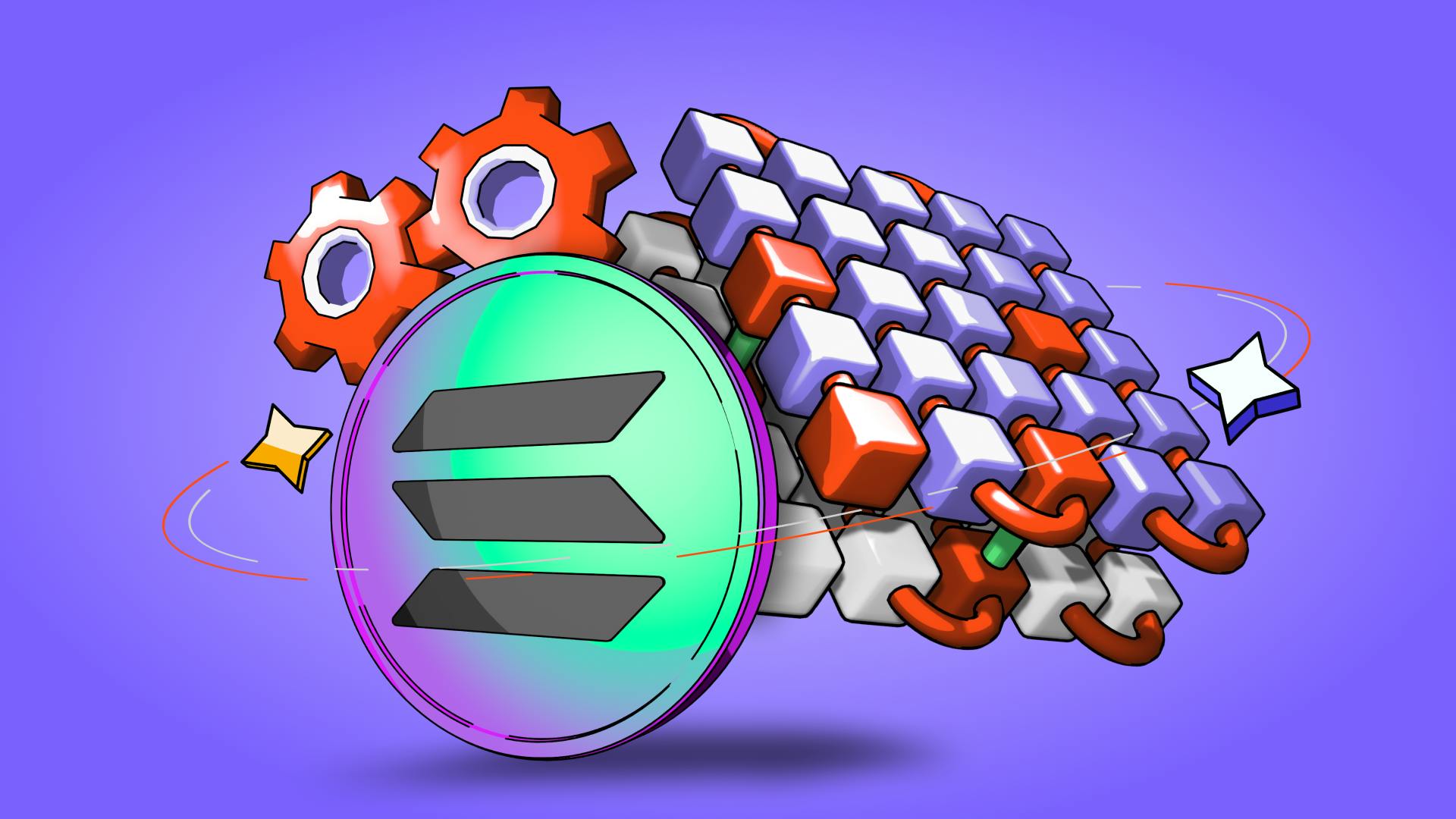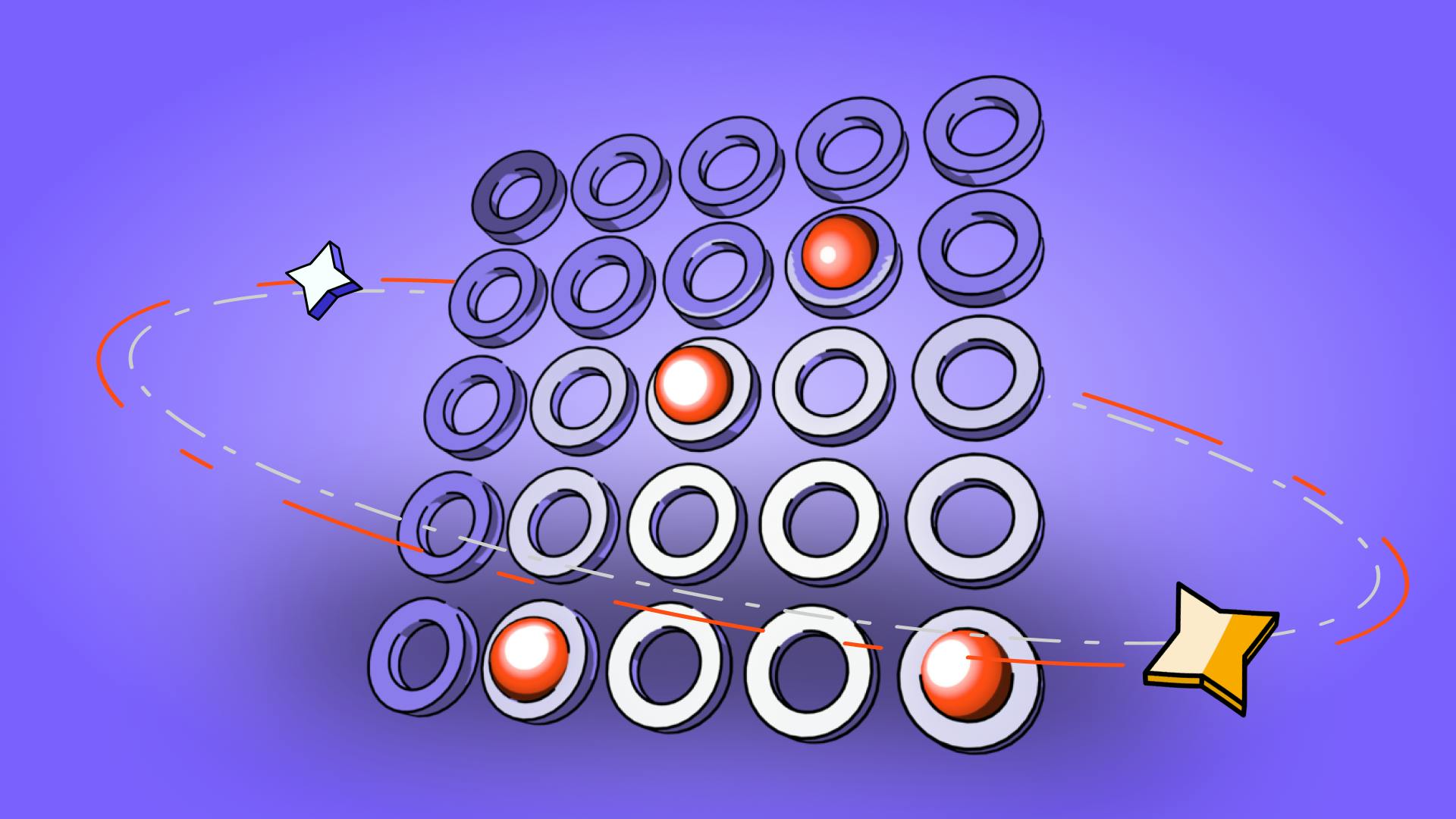Entendiendo Solana: Una Guía para Principiantes sobre la Blockchain de Alto Rendimiento
23 de octubre de 2024

by Equipo Editorial de Coinmetro
23 de octubre de 2024
La tecnología blockchain ha revolucionado la seguridad, verificación y compartición de datos y transacciones. Un blockchain es un libro mayor descentralizado que garantiza transparencia, inmutabilidad y seguridad a través de las redes. Sin embargo, a medida que aumenta la adopción del blockchain, problemas como la velocidad, escalabilidad y eficiencia se convierten en desafíos cruciales. Los blockchains tempranos como Bitcoin y Ethereum enfrentan limitaciones, lo que lleva a transacciones más lentas y tarifas más altas durante períodos de uso intensivo.
Solana es un blockchain de alto rendimiento diseñado para superar estos desafíos clave, ofreciendo velocidad inigualable y transacciones de bajo costo sin sacrificar la seguridad. Al usar su mecanismo único de Prueba de Historia (PoH) combinado con Prueba de Participación (PoS), Solana puede supuestamente procesar alrededor de 65,000 transacciones por segundo (TPS) en la red de prueba (según el equipo), haciéndolo uno de los redes blockchain más rápidas que existen. Sin embargo, en el uso del mundo real, el rendimiento suele ser inferior.
A partir de 2024, Solana sigue ganando tracción debido a su capacidad para soportar una amplia gama de aplicaciones descentralizadas (dApps), desde DeFi hasta mercados de NFT. Su creciente popularidad entre desarrolladores, instituciones y usuarios por igual lo posiciona como un jugador importante en el futuro de la tecnología blockchain.
En este blog aprenderás sobre:
- ¿Qué es Solana?
- Características clave que hacen que Solana se destaque
- El ecosistema de Solana en 2024
- Desafíos de escalabilidad y seguridad
- Solana vs Ethereum: un análisis comparativo
- El potencial futuro de Solana
Solana es un blockchain de alto rendimiento diseñado para abordar los desafíos clave de velocidad, escalabilidad y transacciones de bajo costo. Fue fundado en 2017 por Anatoly Yakovenko, un ex ingeniero de Qualcomm, quien buscaba resolver los problemas de tiempos de transacción lentos y tarifas altas en redes blockchain anteriores como Bitcoin y Ethereum.
La misión de Solana es proporcionar una red rápida, segura y escalable que pueda manejar miles de transacciones por segundo sin comprometer la descentralización. Esto es posible gracias a su mecanismo de consenso único, la Prueba de Historia (PoH), que reduce la necesidad de que los validadores se comuniquen tan frecuentemente como en otros blockchains. Esto, combinado con Prueba de Participación (PoS), permite a Solana lograr velocidades mucho más altas que Bitcoin y Ethereum.
La Prueba de Historia (PoH) de Solana es un concepto revolucionario en la tecnología blockchain. Tiempos las transacciones antes de que se agreguen a la blockchain, creando un orden verificable de eventos. Al establecer esta secuencia de eventos, los validadores no necesitan comunicarse constantemente para confirmar la secuencia de transacciones, haciendo que la red sea mucho más rápida. Esta característica es un cambio de juego ya que ayuda a Solana a procesar más transacciones por segundo sin sacrificar la seguridad o la descentralización.
Solana también utiliza Prueba de Participación (PoS por sus siglas en inglés), lo que mejora la seguridad y eficiencia energética de la red. En un sistema PoS, los validadores son elegidos en función de la cantidad de SOL que han apostado, lo que fomenta un buen comportamiento. La combinación de PoH y PoS permite a Solana asegurar la red mientras consume menos energía que los sistemas tradicionales de Prueba de Trabajo como Bitcoin, haciendo que Solana sea rápida y ecológica.
Uno de los principales atractivos de Solana es su alta velocidad de transacción. A partir de 2024, Solana puede procesar alrededor de 65.000 transacciones por segundo (TPS) en testnet. Sin embargo, como se indicó anteriormente, en condiciones del mundo real, este número tiende a ser mucho menor, alrededor de 200 a 400 transacciones por segundo (TPS) en promedio, aunque puede aumentar a más de 2.000 TPS durante períodos de alta demanda. El alto rendimiento hace que Solana sea ideal para aplicaciones descentralizadas (dApps) que requieren procesamiento rápido de transacciones y escalabilidad, como plataformas DeFi y mercados NFT.
Los bajos costos de transacción de Solana la distinguen de otras cadenas de bloques, ya que tanto los desarrolladores como los usuarios se sienten atraídos por la plataforma. Esto hace que Solana sea un fuerte competidor para proyectos que requieren transacciones frecuentes o de alto volumen. Es una de las principales razones por las que los desarrolladores eligen Solana sobre otras cadenas de bloques más caras como Ethereum, donde las tarifas de gas pueden aumentar durante la congestión de la red.
Debido a sus rápidas velocidades de transacción y tarifas bajas, Solana se ha convertido en un jugador fuerte en el espacio de las Finanzas Descentralizadas (DeFi). A partir de 2024, protocolos DeFi como Marinade y Carrot están impulsando la innovación en la plataforma. Marinade proporciona una solución de staking líquida, permitiendo a los usuarios apostar SOL mientras aún tienen acceso a liquidez. Carrot ofrece APY en tiempo real y aumenta la participación de los usuarios en las finanzas descentralizadas. Estas aplicaciones contribuyen al creciente Valor Total Bloqueado (TVL) de Solana, reflejando la creciente adopción de su ecosistema DeFi.
La velocidad y las bajas tarifas de Solana la hacen atractiva para los creadores y coleccionistas de NFT. Las altas tarifas de gas en Ethereum han llevado a muchos creadores a migrar a Solana, donde los costos de transacción son más bajos y acuñar NFTs es más accesible. Plataformas populares como Magic Eden han florecido, y el ecosistema continúa atrayendo nuevos artistas y proyectos. La rapidez y eficiencia de costo son cruciales para el éxito de Solana en el espacio NFT.
En un movimiento hacia la integración de la tecnología blockchain en la vida diaria, Solana lanzó su Saga Mobile, un teléfono inteligente con soporte incorporado para Solana. Este dispositivo móvil permite a los usuarios gestionar sus activos criptográficos, interactuar con dApps y participar en actividades de blockchain sin necesidad de aplicaciones externas. El teléfono Saga tiene como objetivo hacer que blockchain sea más accesible, y vio una fuerte demanda inicial tras su lanzamiento. Además, Solana ha introducido un segundo teléfono, el Seeker, que ya ha obtenido pedidos anticipados para su lanzamiento anticipado en 2025. Estas innovaciones están ayudando a impulsar la adopción de blockchain más allá hacia la tecnología convencional.
Solana ha ganado tracción con las empresas institucionales. Compañías como Franklin Templeton y Citi han lanzado servicios financieros en la red Solana, mientras que Société Générale introdujo un stablecoin en euros conforme a MiCA en la plataforma. En mayo de 2024, también se reveló que el stablecoin PayPal USD (PYUSD) está disponible en Solana. Este nivel de adopción por parte de los jugadores tradicionales de finanzas solidifica la credibilidad de Solana como una cadena de bloques confiable para algo más que aplicaciones descentralizadas. Se está convirtiendo en una infraestructura crítica para las instituciones financieras que buscan aprovechar la tecnología blockchain para mejorar la eficiencia y seguridad.
Solana ha introducido Fire Dancer, un nuevo cliente de validación diseñado para mejorar significativamente el rendimiento y la seguridad de la red. Desarrollado en colaboración con Jump Crypto, Fire Dancer incrementa el rendimiento y minimiza la latencia, ayudando a Solana a procesar aún más transacciones por segundo mientras mantiene la seguridad. Este cliente de validación diversifica la red al añadir un segundo validador construido de manera independiente, reduciendo el riesgo de vulnerabilidades en la red causadas por puntos únicos de falla.
Solana utiliza la compresión Zero-Knowledge (ZK) para reducir drásticamente los costos de estado en la blockchain. La compresión ZK funciona condensando grandes cantidades de datos en pruebas más pequeñas y verificables, lo que reduce la carga en la blockchain. Esta tecnología ayuda a escalar aún más Solana haciendo que las transacciones sean más eficientes y menos costosas. La compresión ZK es especialmente beneficiosa para dApps y otros entornos de alta transacción, permitiéndoles operar de manera más fluida sin sobrecargar la red.
En el pasado, Solana experimentó notables interrupciones de la red en septiembre de 2021 y enero de 2022. Estas interrupciones generaron preocupación sobre la fiabilidad de la blockchain, con la red quedando fuera de línea hasta 17 horas durante el incidente de septiembre de 2021. Solana también enfrentó otras interrupciones, incluyendo una en mayo de 2022 (que duró 7 horas), otra en junio de 2022 (que duró 4 horas), y una gran interrupción de la red el 6 de febrero de 2024, donde un mal funcionamiento técnico detuvo la producción de bloques durante casi cinco horas. Sin embargo, el equipo de desarrollo de Solana ha realizado varias mejoras clave para mejorar la resiliencia de la blockchain. Estas actualizaciones incluyen una mejor coordinación entre validadores, medidas de estabilidad mejoradas y mejoras en la gobernanza en cadena.
Solana tiene una ventaja sobre Ethereum en términos de velocidad de transacción, procesando alrededor de 200 a 400 transacciones por segundo (TPS) en promedio, y puede aumentar a más de 2,000 TPS durante alta demanda. Ethereum maneja actualmente entre 15-30 TPS. Sin embargo, Ethereum está mejorando su escalabilidad a través de Ethereum 2.0, que apunta a alcanzar hasta 100,000 TPS mediante sharding y otras soluciones de Layer 2. Sin embargo, la velocidad de Solana sigue proporcionando una ventaja inmediata para aplicaciones de alto rendimiento como juegos, DeFi y NFTs.
Otra ventaja importante es el costo de las transacciones en Solana. Las tarifas de transacción promedio de Solana son tan bajas como $0.0001 por transacción, lo cual es extremadamente bajo en comparación con Ethereum, donde las tarifas de gas pueden fluctuar entre $10 y cientos de dólares durante la congestión de la red. Mientras que las altas tarifas de Ethereum provienen de su fuerte seguridad y descentralización, siguen siendo un desafío para los usuarios y desarrolladores cotidianos.
Ethereum lidera con su madura y extensa comunidad de desarrolladores, respaldada por muchas aplicaciones descentralizadas (dApps) y protocolos DeFi. Ha sido la plataforma de referencia para desarrolladores desde 2015, albergando alrededor de 3,000 a 4,000 dApps. Aunque más nuevo, Solana ha atraído rápidamente a desarrolladores debido a su escalabilidad y bajas tarifas, especialmente en sectores de alto rendimiento como juegos y comercio de alta frecuencia. Sin embargo, el ecosistema de desarrolladores de Ethereum sigue siendo más grande y más establecido.
Uno de los principales desafíos que enfrenta Solana es su falta de compatibilidad con la Ethereum Virtual Machine (EVM). Esto dificulta que los desarrolladores de Ethereum migren sus dApps a Solana de manera fluida. El soporte de EVM de Ethereum permite a los desarrolladores utilizar las mismas herramientas e idiomas de contratos inteligentes como Solidity, que es una razón clave de su dominio entre los desarrolladores. Solana, por otro lado, es compatible con Rust y C, que son poderosos pero menos familiares para los desarrolladores de Ethereum.
La hoja de ruta de Solana para 2024 destaca continuos avances tecnológicos y adopción en el mundo real. En Breakpoint 2024, Solana presentó Solana 2.0, enfocándose en mejoras de escalabilidad y rendimiento de la red. Una de las principales innovaciones es la Compresión ZK, que busca reducir significativamente los costos de estado, mejorando la eficiencia y escalabilidad para desarrolladores y usuarios. Esta actualización y otros avances destacan los esfuerzos continuos de Solana por abordar desafíos previos y empujar los límites del rendimiento de blockchain.
El crecimiento de Solana en DeFi, NFTs y aplicaciones móviles está expandiéndose rápidamente. Notablemente, asociaciones como con Google Cloud, ahora un validador productor de bloques en Solana, muestran la creciente adopción institucional de la plataforma. Además, el lanzamiento de los smartphones Saga y Seeker está impulsando la integración de Solana en la tecnología móvil, permitiendo a los usuarios almacenar criptomonedas e interactuar con aplicaciones descentralizadas de manera fluida.
Solana apunta a liderar el camino en la construcción de un ecosistema Web3 inclusivo y fácil de usar. La plataforma enfatiza aplicaciones del mundo real, particularmente en pagos y servicios impulsados por blockchain, que los usuarios pueden experimentar a diario. Solana está esforzándose por incorporar a 1,000 millones de personas en finanzas descentralizadas y autogestión, reforzando su objetivo de moldear el futuro de Web3 a través de la accesibilidad y utilidad en el mundo real.
Compra y mantiene Solana (SOL) en Coinmetro
Únete a la comunidad de Coinmetro en DiscordyTelegram, donde traders e inversores con visión de futuro se reúnen para compartir ideas, explorar nuevas oportunidades y profundizar en las criptomonedas. Si necesitas ayuda, por favor contacta a nuestro equipo de soporte al cliente de clase mundial vía chat en vivo 24/7o correo electrónico a hello@coinmetro.com. Para convertirte en un usuario de Coinmetro hoy,Regístrateahora o dirígete anuestro nuevo Exchangesi ya estás registrado para experimentar nuestra plataforma de trading premium.
Etiquetas
Artículos relacionados

Blockchain en la educación: transformando el aprendizaje y la acreditación
¿Qué pasaría si tu expediente académico pudiera verificarse al instante, en cualquier lugar del mundo? Esta es solo una de las preguntas que reflejan…
7m

Cómo comprar Ethereum (ETH) en Coinmetro - paso a paso
¿Quieres comprar Ethereum al instante sin complicaciones? Coinmetro lo hace rápido, sencillo y seguro. Esta guía te muestra los pasos simples para…
3m

Cómo hacer staking de Ethereum (ETH) en Coinmetro de forma rápida, sencilla y segura
¿Quieres ganar ingresos pasivos con tu Ethereum? Con Coinmetro, hacer staking de ETH es un proceso fluido, seguro y fácil para principiantes. En esta…
3m

El papel de la cadena de bloques en la trazabilidad de la cadena de suministro
En 2021, un escándalo sacudió al sector alimentario. Varios proveedores habían etiquetado carne caducada como si fuera fresca. El resultado fue la…
11m